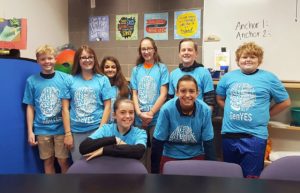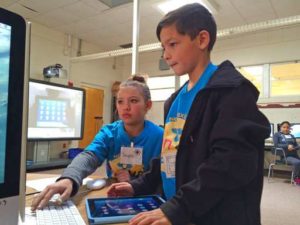Building the Best Team with Diverse and Inclusive Hiring
Hiring is more than just going through the motions of collecting applications, interviewing candidates and negotiating terms – it starts with the way the job is promoted and doesn’t end until the candidate is fully onboarded and thriving in their new role. Diverse and inclusive hiring indicates that each step of the hiring process is driven by awareness: intentional language, a welcoming environment, open-minded interviewers and a fair, equitable rating process.. It is imperative that all levels of the organization are educated on the value of diversity and inclusion, and bought into the vision. Additionally, candidates and new-hires need to be given a path to provide feedback and express any concerns they have throughout their hiring process. High performing and diverse teams benefit from a group of individuals with varying skill sets, knowledge and experience, who, together, form a broader perspective and the ability to exhibit critical thinking, to solve complex problems and to deliver solutions that would otherwise be inconceivable.

Inclusive Job Descriptions
The beginning of the hiring process is how the open position is described. Job descriptions can help candidates identify the role as a good/bad fit based on their goals and expectations. It is just as important that the candidate finds the opportunity to be a good fit as it is for the hiring organization to believe the candidate is a good fit. This prevents turnover and the costly mistake of either onboarding the wrong person or losing the right person. Job descriptions should be clear to the candidates as it relates to the following:
- Flexibility – working parents or caregivers may need the ability to work from home or have flexible hours. Attracting this demographic can be done by clearly stating how the organization approaches flexible work.
- Physical requirements – candidates that have some disability may still be capable of performing at the expected level, but accommodations may be required. Describing the environment and ensuring that the environment can provide appropriate accommodations is key to attracting those with varying physical abilities.
- Equal opportunity – attracting a diverse workforce is one thing, but retaining them is another. Job descriptions can be more appealing to more audiences when they describe the way the organization values diversity and even provide some statistical data around equal representation and growth opportunities that are available to all employees.
- Experience requirements – diversity is not only a matter of gender, age, skin color, religion or ethnicity, but also comprises diversity of background, education and experience. Job descriptions that allow candidates to identify themselves as a good fit are inclusive of different industry experiences and education (i.e., certifications versus college degrees).
- Word choice – The job description can be interpreted differently by different audiences. Choosing the wrong words to describe the position, the company or the opportunity can deter ideal candidates. To avoid bias in your job descriptions, here are a few rules to follow:
-
- Use real job roles – using terms like ‘master, guru, or superhero’ can make the position unattractive to those who don’t relate to the term. Stick with ‘engineer, manager, professional’.
- Use inclusive pronouns – ‘they’ or ‘one’ can be used to describe the person without assigning a gender.
- List the real job requirements, nothing more. If the role requires a specific degree, certification or experience, call it out, but if it’s optional, drop it because you could be missing out on candidates with exceptional talent and potential because they don’t feel they meet all the expectations.
- Include the key aspects of the organization’s core values, especially as they pertain to employee satisfaction and impact. Studies show that millennials and younger generations are driven more towards making a difference and the mission than even pay or accolades.
- Use technical tools to help you remove gender biases in language.
Marketing Open Positions
Many industries suffer from a lack of new interest, whether from the younger generations entering the workforce, or the seasoned professionals taking their next steps in their careers. “Industry retreads” is a term used to describe individuals who bounce around from company to company in the same industry, selling or building a new widget which, they promise, is even better than the last one they represented. How can an industry evolve when it is managed by the same group of people decade after decade? Attracting a diverse workforce is a proven way to drive innovation, to differentiate, and to meet the needs of a broader customer base. The way a job description is promoted is just as important as the job description itself when it comes to attracting candidates.
Gone are the days when an ad in the classified section was used to communicate to everyone living within the region where that newspaper was delivered. So, how do we maximize the visibility of our job postings to a more diverse group of potential candidates? Start with expanding your network. Partner with trade schools or different universities in different regions to help promote your organization to those seeking a career in your field. Be mindful of the need to potentially relocate a candidate and prepare for the additional cost and time required to accommodate them during their transition. Consider the online platforms used to promote your openings, are they reaching a broad audience? If you already have a good foothold with diversity in your workforce then further lean into your employees for referrals.
Interviewing and Candidate Selection
Interviews are key to gathering information about how a candidate works, thinks and operates in a team environment. Unconscious bias is the Achilles heel of the interviewer and can lead to over-indexing on factors that matter more to them than they do to the organization. For example, an interviewee that attended the same alma mater may have a lot in common with the interviewer. The interview takes a detour into the direction of the professors, sports, and pizza place on campus. They like them, but not for the right reasons. Someone else comes in and maybe has a different educational background which is hard for the interviewer to relate to, and therefore, appreciate. Their conversation is less personable, and may yield a lower ranking for the candidate, even though they were not fairly compared to their competitor.
There should be a clear process for conducting interviews, including: predetermined questions targeting specific information, note-taking that allows the interviewer to capture the information needed and to be able to recall the key details needed to make a fair assessment, collaboration between multiple interviewers so the decision is made by committee and not by a single individual, and a list of characteristics against which all candidates are measured. Ensuring all interviewers are trained on the process and have had the opportunity to observe others conduct interviews is a great way to ensure that each candidate is given a fair chance to appeal to their strengths and potential.
Interviewers should be trained in the information to exclude from their notes to avoid skewing perceptions. If a candidate offers information that is not material to the interview; such as, marital or parental status, religion, hobbies (if unrelated to the role), political views, etc. those items should not be considered when evaluating the candidate. Similarly, removing gender-bias from the interview by using the term “they” rather than “he” or “she”, and age-bias can be avoided by excluding the year they graduated.
Ultimately, the interviews should yield key indicators about how the candidate thinks, communicates, solves problems, works within a team, and influences outcomes. Nothing more, and nothing less.
Onboarding
Once the ideal candidate has been selected, their onboarding process kicks off. This is critical. Consider this their real first impression of what it’s like to work for the organization. How much time were they given before their start date, what accommodations were provided, how long does it take to get them a laptop, email address and cell phone number? Treating new-hires with the same level of consideration, concern and service as you would a customer is the best way to show them they are a valued member of the team.
Similarly, their ramp-up period starts on day one, but it can take weeks or months for them to learn all they need to know to be successful. Provide a clear path to find the information/resources they need, a point of contact that can support them for each division/domain, and a communication path for them to ask questions and voice concerns.
Once the time comes for the new-hire to get down to business, make sure they are given opportunities to tackle projects that could strengthen their resume and allow them to shine. After all, it isn’t just building a diverse team that matters, but ensuring that each member of the team feels like they belong. Celebrate what makes each team member unique, encourage them to learn and grow, and empower them to become the influential difference-maker they were hired to be.

CBT’s Approach
One example of how CBT strives to attract a diverse talent base is in their ongoing support of GenYES, an organization that “prepares students to be technology leaders, providing in-classroom, online, and distance learning support to educators, peers, and their communities.” GenYes has yielded approximately 50/50 gender representation in STEM curriculum. Kelly Ireland, CBT Founder and CEO, is an advisor of this organization and is participating in an event coming up on August 6th called Race and Learn where we will open up networking opportunities with educational representatives and corporations to engage a diverse group of high school students with potential employers.

GenYes provides grades 3-12 students with the opportunity to provide peer-to-peer coaching opportunities, immersion into hands-on projects where they can apply what they’ve learned (i.e., building websites or completing IT tasks), and fosters a service-mindedness by empowering students to help teachers and peers with technology needs.
In its support of GenYes, CBT serves as a change agent in the up-and-coming tech workforce by fostering a community built on empathy, understanding and good will. All students benefit from the program by completing a GenYes project, while excelling students are even offered internships.
What’s next?
Ask yourself… What can YOU do to increase the diversity and inclusivity in your organization’s hiring process?

